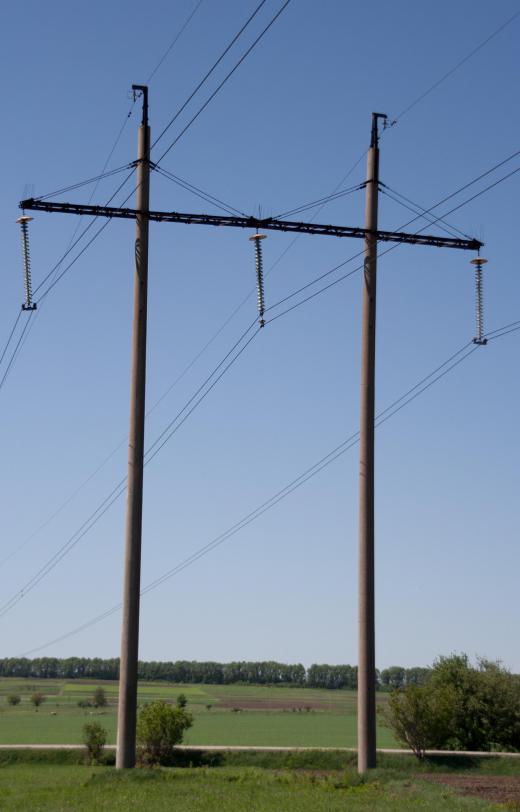Electrical wire is the medium through which electricity is carried to and through each individual home that uses electrical power. It is made of a metal that easily conducts electricity, usually copper, in a plastic sheath called an insulator. There are various different types of this wire, each suited to certain loads and conditions. Four main types are common in residential applications.
The first type is triplex wire, which is the cable that runs aerially between outdoor power poles. Often in triplex wire, there are three wires twisted together: two insulated ones carrying the line voltage, and the other being a bare, neutral wire. The second type, main feeder wires, run between a power pole and the house that the power is being brought to. These wires are usually rated for 125% of the load they are required to carry.

The other two types of electrical wire run through the walls and power outlets of a house. Panel feed wires are rated at 125 amps, to carry power into a main junction box or circuit breaker panel, and they provide the hookup from which the other wiring in a house branches out. Non-metallic sheathed wire, also called Romex®, is the typical wiring used in most homes. It consists of two or three conducting wires and a bare ground wire, all encased in a plastic sheath. It is inexpensive and well-suited to dry indoor applications.

In the United States, acceptable wiring methods are specified by the National Electrical Code (NEC). Local jurisdictions will usually adopt the NEC and then vary the local code from it slightly. The NEC is not required to be the electrical code for any jurisdiction, but rather it is simply an influential set of standards used by local governments for purposes of regulation. Its intent is to protect people from hazards that arise from the improper use of electricity.

One example of an NEC guideline would be the stipulation that the grounding wire in a circuit be either bare or have green insulation. The NEC also states that large appliances such as furnaces, stoves, and central air conditioning units should be on a dedicated circuit. The guidelines of the NEC receive changes and updates from time to time, but existing installations are generally not required to make changes to conform to the new code. New buildings are required to adhere to whatever electrical wire standards are set forth by local authorities.
